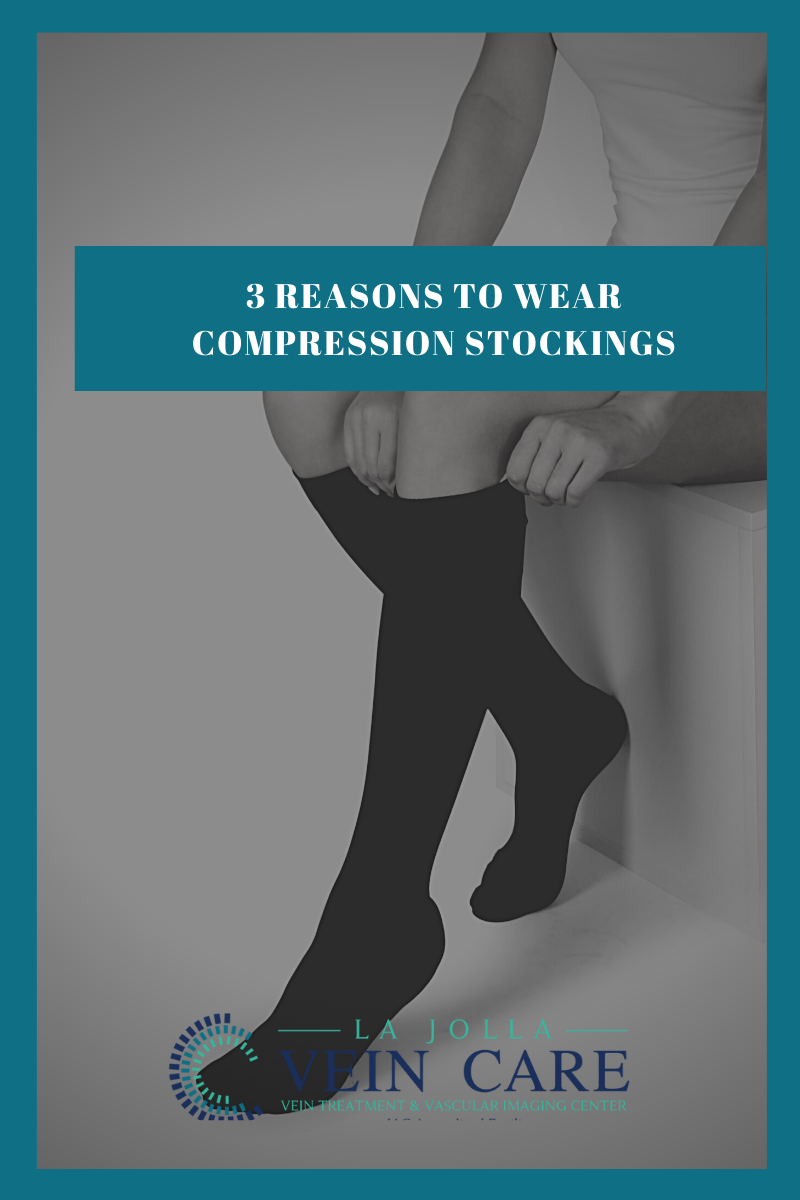3 Reasons to Wear Compression Stockings
LJVascular2022-04-15T15:40:11-07:00Why Compression Stockings:
Compression stockings are an important part of the overall healing process. As a result, you’ll need to wear the stockings following the vein treatments from La Jolla Vein Care to ensure you get the best outcomes. Physiologically, compression therapy increases venous blood flow back to the heart, reduces reflux in diseased veins, increases venous blood flow, reduces elevated water content of the tissue, reduces inflammation, and sustains reparative processes. In short, compression therapy not only improves results after treatment, but it also improves blood flow and reduces symptoms and swelling in the legs.
Compression stockings offer style after vein treatment:
In the past, patients recovering from varicose vein treatments were limited in both mobility and style. After a procedure, patients were required to wear compression stockings in a lovely shade of beige. This might work if you’re looking to hang around the house for a couple months. If you’re ready to live an active life while you heal, however, you can get medical grade compression stockings that are fashionable, stylish, and comfortable. At La Jolla Vein Care, you get more than a safe and effective alternative to surgery—you get access to customized compression stockings in a variety of styles from the leading brands, including Sigvaris, Medi, ComfoMed, Ames Walker, and JOBST. While we are more than happy to order beige stockings for you, it’s good to know that you have options—the option to look good, feel good, and heal in style.
Compression stockings help prevent deep vein thrombosis:
Stay moving, avoid prolonged sitting. For example, when flying or traveling, the risk of DVT is 1% on a long haul flight (greater than 6 hours).
To minimize this risk, you should wear compression stockings (which helps increase the blood flow in the legs), stay hydrated, avoid excessive alcohol, use the calf muscles- walk about the cabin and frequently pump the calf muscles by doing foot lifts.
During pregnancy, compression should be worn and after pregnancy, when the risk of DVT is highest (the likelihood of a blood clot postpartum is 40-65 for every 10,000 women).
Compression stockings increase athletic performance:
Compression is known for improving circulation after the removal of varicose veins. But can they improve athletic performance? The answer is a resounding yes. According to Medi, compression sport stockings are clinically proven to increase performance. Over the course of a marathon, for example, running time is reduced by approximately five minutes while the exertion on your muscles is reduced by roughly six percent. Moreover, a study by Technische Universität Dresden reveals that blood circulation is 30% higher at rest after engaging in certain athletic activities when wearing compression sport stockings. So whether you’re a jogger checking out the scenery or a hard-core athlete training for a marathon, there’s something to help you reach your peak.




